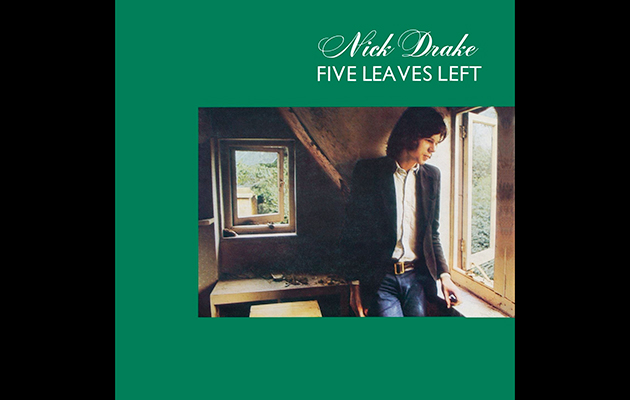Before the arrival of Bob Marley, says Beverley Martyn, there were two records you could guarantee Island Records founder Chris Blackwell would have near his turntable. One was Stormbringer!. The other was Five Leaves Left. “Chris got Nick immediately,” says Joe Boyd. “There was a certain public-school-boy affinity there.” When Boyd said that he planned to make another Nick Drake album straight away, “he said, ‘Fine, great.’”
“I just felt we had to make another great album and people would eventually get it,” says Boyd. “People would see we were serious.”
“There was an underlying feeling that Bryter Layter needed to be a bit more accessible in some ways,” says John Wood. “Five Leaves Left is fairly formal in its structures. A rhythm section would give the album a wider appeal.”
Boyd had recently heard Mike Heron’s latest batch of songs and suggested they would be better suited to a solo project than to The Incredible String Band. Heron’s Smiling Men With Bad Reputations (released six months after Bryter Layter) features an impressive supporting cast: Beach Boys drummer Mike Kowalski, John Cale, Dudu Pakwana from Chris McGregor’s Brotherhood Of Breath, and the rhythm section of Dave Mattacks and Dave Pegg. “It was a Joe special,” says Heron. “Joe knew all the people, suggested all the people and contacted all the people.”
“He’s a big picture producer,” says Dave Mattacks. “He read the paper and made aesthetic decisions: ‘This isn’t working, that’s not a good idea, you’re not convincing me with that performance.’ John made audio sense of that.”
The same combination of deep listening and man-management Boyd now brought to Bryter Layter, in which Drake was accompanied by two rhythm sections: Americans Mike Kowalski and bassist Ed Carter, and from Fairport Convention, Dave Mattacks and Dave Pegg. Before the sessions, Drake drove up to Fairport’s communal home in Hertfordshire to run through the songs.
“He came to the Angel at Hadham, which was our group hovel,” says Dave Pegg. “13 people with one toilet. There weren’t any great musical preparations – we just played along. It was like instant arrangements.”
“He came up in the middle of the day, ran the songs and drove back that evening,” says Dave Mattacks. “Like with Richard Thompson, the songs were basically done, so they leave you to it. When someone’s time is that good, you don’t have to provide the rhythmic glue – you’re left to do something more interpretative.”
The album’s loose feel continued to grow in response to its environment. For “Poor Boy”, pianist Chris McGregor happened to be in the control room at Sound Techniques – he dropped downstairs to record the song’s piano solo. John Cale was at the studio working on mixes of Nico’s Desertshore, and asked to hear some recent Boyd/Wood work. He admired the Mike Heron tracks, later playing on the album. He then heard some Nick Drake.
“He went bananas,” remembers Boyd. “He said, ‘I have to meet this guy, where is he?’”
“He and Nick had some sort of meeting,” Wood continues. “God knows what happened at that. But he called up the next day and said he wanted a celeste, a harpsichord, a bass amp…”
“I said, ‘OK, What are we doing?’” says Boyd. “He said, ‘Recording two of Nick’s songs. I’ve been with him all night.’ They showed up at noon together and we did ‘Northern Sky’ and ‘Fly’.”
The last third of Bryter Layter contains some of the richest and most surprising music in Drake’s catalogue. The backing vocals and piano solo on “Poor Boy”, and the magical sound of celeste on “Northern Sky” place the singer in a warm and inviting setting. If the music sounds easeful, it was a labour-intensive ease.
“We pulled out all the stops,” says Joe Boyd. “Like, ‘Let’s put a microphone in the hallway to add a touch of chamber echo to the strings…’ Not that anyone’s going to hear that. But it gave it an atmosphere.”
“It was perfect for the time and for that location,” says Beverley Martyn. “Nick lived in Belsize Park and would come round nearly every night to us in Hampstead to eat and to be part of the family. I was caught under the spell of those two albums.”



